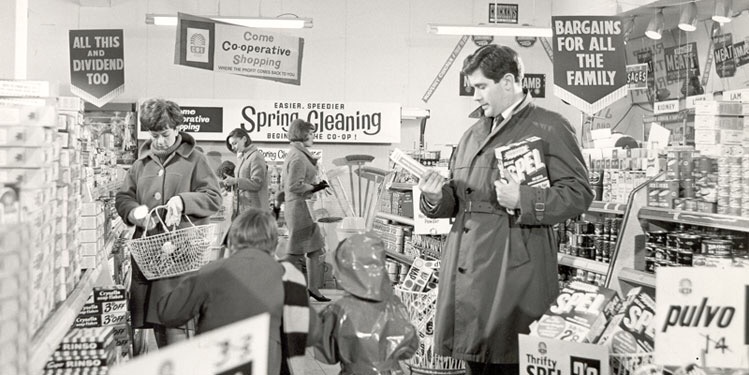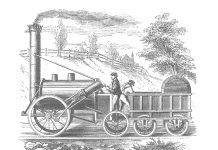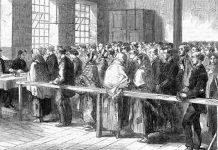Millions are stepping back to the way consumers used to shop for food in the 60s before the advent of huge supermarkets and fridges, freezers and microwavesaccordng to a new study by the Manchester based Co-op
The modern trend of shunning the big monthly shop in favour of buying smaller amounts locally reflects exactly what was happening 50 years ago.
Almost half of shoppers now no longer do a big weekly shop, while more than a third have adopted a ‘grazing’ shopping mentality.
The Co-op’s Convenience Retailing report marks The 50th anniversary of self-service shopping becoming the norm and compares and contrasts food shopping in 2015 with the mid-sixties, shows how modern consumers are reverting to the buying habits of their grandparents.
Shopping baskets in 2015 compared to 1965 show a stark difference in diet and tastes, with more convenience food now compared to more basic ingredients which were used to make the foods from scratch.
In 1965 the average basket would have contained butter, meat, milk, bread, sugar, flour, eggs as well as lard, suet and yeast. In 2015 consumers are more likely to have confectionary, yogurts and desserts, crisps and snacks, in store bakery products, bananas and energy drinks.
The amount consumers spend in proportion to their income has also fallen sharply. According to the ONS today the average weekly expenditure is £517.30 with food and non-alcoholic drinks accounting for 11 percent of this expenditure at an average of £58.80. In 1965, families spent 23 percent of their income on food.
In the mid-sixties there were still individual butchers and greengrocers, many operated by the Co-op, and so grocery stores concentrated on selling food in packets and tins. Another big difference was there was very little alcohol sold because drink consumed at home was generally purchased at standalone off licences.
After the Second World War, the Co-op was the first to introduce the American idea of serving yourself but it was mid-1965 before the majority of its stores had been converted from the old fashioned counter service.
The report includes a plan of how a Co-op food store would have been laid out in the mid 1960’s, highlighting how many innovations introduced back then are still recognisable to 21st century consumers.
Although The Co-op had opened the
first purpose-built, self-service store at Southsea in 1948, it was not until 1965 that the majority of its shops had been converted to the new format.
Steve Murrells, the Company’s Chief Executive of Retail said:
“After the war the Co-op pioneered relatively small self-service shops and we are again aiming to be the leading convenience operator in the UK.
“Our report shows what a typical newly-converted store would have looked like and, while today there is far more emphasis on fresh produce, many aspects of the layout are still familiar.
“In half a century much has changed while in many other ways little has altered. Many of the staples found in people’s shopping baskets in the 1960s remain, yet, there are new additions which reflect changing lifestyles and modern shopping habits.”







